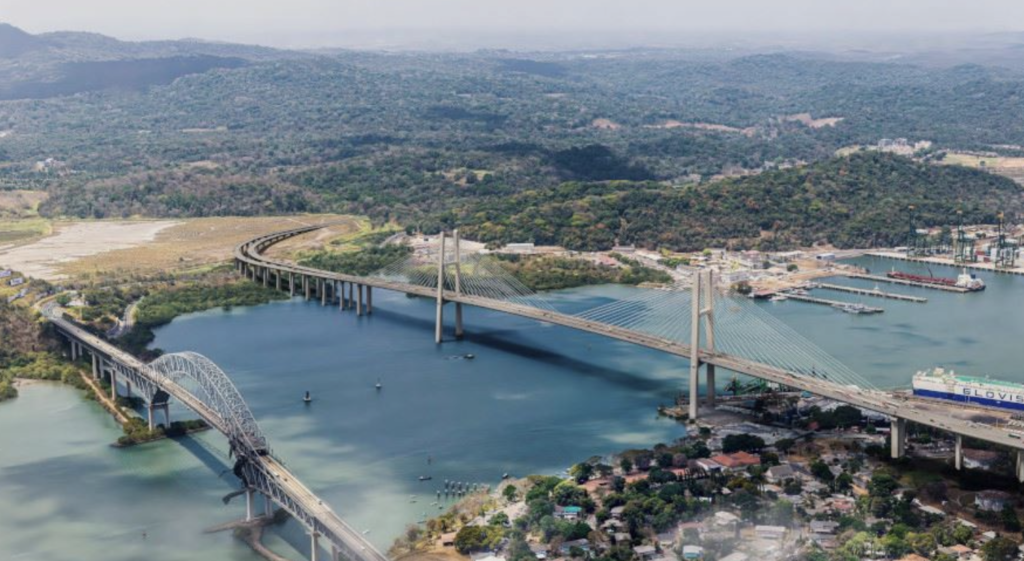
A long-sought fourth bridge across the Panama Canal may finally advance to full-scale construction after five years of geopolitical wrangling and economic uncertainty.
Consorcio Panamá Cuarto Puente (CPCP), the consortium of Chinese state-owned firms originally selected by Panama’s government in 2018 to design and build what was to be a 1,120-m-long two-tower cable-stay structure, has signed a contract addendum with the country’s Ministry of Public Works this March aimed at getting the project restarted.
In addition to refining the project’s financial structure, the addendum eliminates a transit line and other elements from the original scope and sets a total project cost of $1.3 billion. Construction under the original 2018 deal was expected to last three years.
Panama’s Public Works Minister Rafael Sabogne said during the signing of the addendum with CPCP that, “the team of experts from the consortium will continue the development of the detailed design, the studies and other field work, with a view to beginning the larger works in the coming months.”
Another indication of potential progress came in June, when infrastructure engineering and technology specialist Sener Group of Spain announced that it was joining the design team along with Belgium’s Bureau Greisch to craft interchanges on both sides of the bridge as well as 2,450m of double-deck access viaducts and “special studies and supplementary projects.”
A Difficult History
Although the Panama Canal was completed in 1904, it wasn’t until 1962 that the divided country was linked with a permanent structure—the Bridge of the Americas, located just above the Pacific approach near the city of Balboa. Since then, Panama has added two other permanent crossings; the Centennial Bridge that opened in 2004 near the Pedro Miguel locks and the Atlantic Bridge that opened in 2019 at the canal’s Atlantic entrance.
With the Panama City bridges increasingly burdened by a growing volume of freight traffic, Panama’s government proposed building a new six-lane crossing that also would provide an economic boost for approximately half a million residents of the across the canal from Panama City.
In June 2018, Panama’s Ministry of Public Works awarded the $1.4-billion design-build project to CPCP, comprised of China Communications Construction Co. and its subsidiary China Harbour Engineering Co. The selection survived separate protests by two competing bid teams—one made up of Astaldi of Italy and Daelim of Korea, and another led by China State Construction Engineering Corp. and China Railways Group.
The choice was also viewed by many international observers as a move by Panama’s then-president Juan Carlos Varela to shake off U.S. influence and forge closer economic ties with China. Having already ended Panama’s relationship with Taiwan and establishing official diplomatic ties with Beijing in 2017, Varla made deals with other Chinese companies to build a $4-billion high-speed rail line connecting Panama City with Costa Rica, $1 billion in port facilities, an electrical transmission project, convention center and other facilities.
Many of these projects were eventually scaled back or scrapped following the 2019 election of current president Laurentino Cortizo, whose policies have been more favorable to U.S. interests. Though the bridge project appeared poised to continue, Cortizo announced later that year that the effort would be “paused” for a review of state resources and priorities.
Pandemic-related economic upheaval on both sides of the Pacific continued to stall the project, even though the CPCP announced in September 2020 that construction would soon resume. The consortium also asserted at the time that neither of the lead companies were among the two dozen Chinese firms sanctioned by the U.S. that year for participating in the constructing artificial islands in the South China Sea.